These exclusive satellite images show that Saudi Arabia’s sci-fi megacity is well underway
Weirdly, any recent work on The Line doesn’t show up on Google Maps. But we got the images anyway.
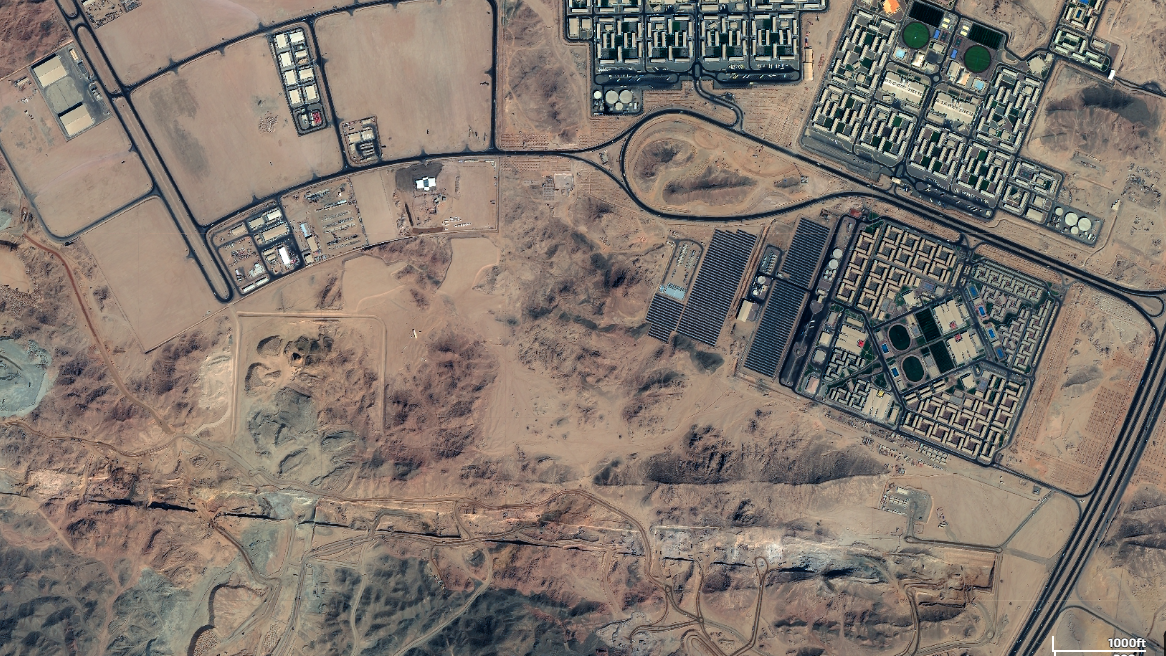
In early 2021, Crown Prince Mohammed bin Salman of Saudi Arabia announced The Line: a “civilizational revolution” that would house up to 9 million people in a zero-carbon megacity, 170 kilometers long and half a kilometer high but just 200 meters wide. Within its mirrored, car-free walls, residents would be whisked around in underground trains and electric air taxis.
Satellite images of the $500 billion project obtained exclusively by MIT Technology Review show that the Line’s vast linear building site is already taking shape, running as straight as an arrow across the deserts and through the mountains of northern Saudi Arabia. The site, tens of meters deep in places, is teeming with many hundreds of construction vehicles and likely thousands of workers, themselves housed in sprawling bases nearby.
Analysis of the satellite images by Soar Earth, an Australian startup that aggregates satellite imagery and crowdsourced maps into an online digital atlas, suggests that the workers have already excavated around 26 million cubic meters of earth and rock—78 times the volume of the world’s tallest building, the Burj Khalifa. Official drone footage of The Line’s construction site, released in October, indeed showed fleets of bulldozers, trucks, and diggers excavating its foundations. Visit The Line’s location on Google Maps and Google Earth, however, and you will see little more than bare rock and sand.
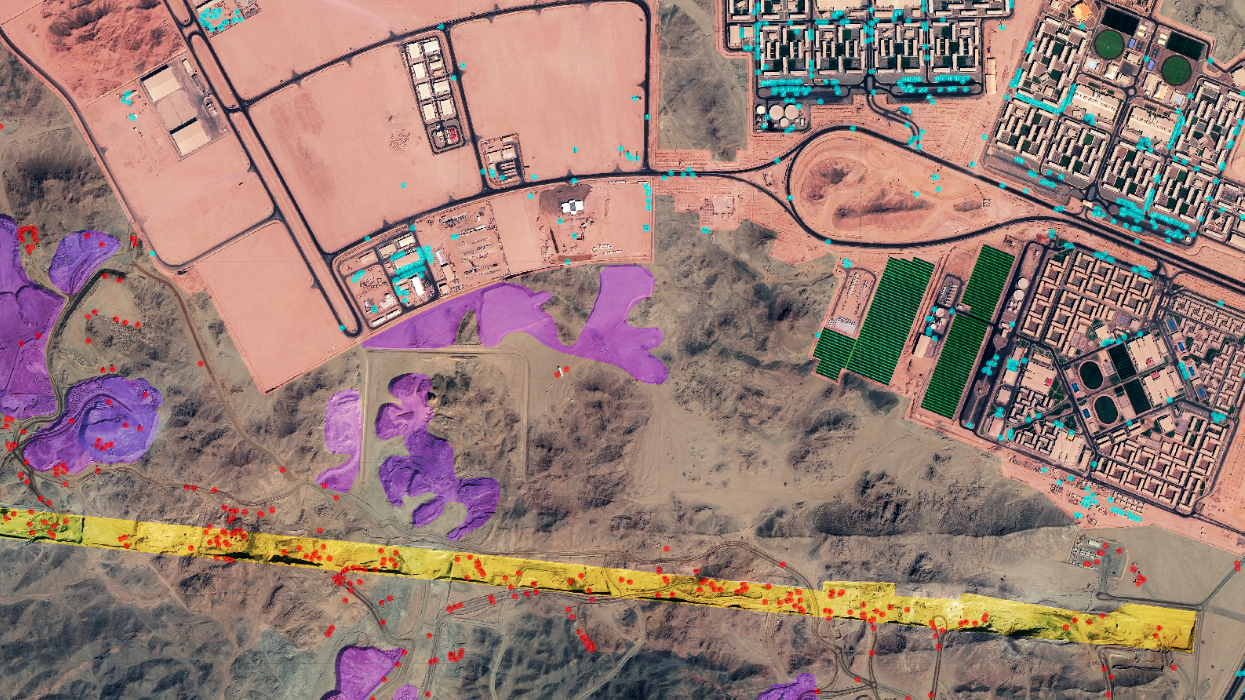
The strange gap in imagery raises questions about who gets to access high-res satellite technology. And if the largest urban construction site on the planet doesn’t appear on Google Maps, what else can’t we see?
The Line is as controversial as it is futuristic. Critics doubt the practical and environmental wisdom of building such a massive structure in the desert. And many of the technologies it is supposed to incorporate remain unproven, including cloud seeding, air taxis, domestic robot servants, and seawater desalination using renewable power. And part of the site has been home to the Huwaitat people, who have been evicted from the area to make way. One person protesting their displacement was allegedly shot dead by Saudi security forces, and three more recently received death sentences.
Nevertheless, initial construction began in April 2022, and in June The Line’s parent company, Neom, awarded tunneling and blasting contracts for high-speed passenger and freight rail tunnels.
It was when the drone footage of the early work was released that Amir Farhand, CEO and founder of Soar Earth, started wondering: Where were the high-resolution images of this half-trillion-dollar project?
Google sources its satellite images from a range of providers, including governmental satellites like the US’s Landsat and the EU’s Sentinel 2, as well as commercial providers such as Maxar and Planet. While the lower-resolution Landsat and Sentinel 2 images were available to download, confirming that some construction activity was happening, at least one private company seemed to have stopped taking high-resolution pictures of The Line’s site sometime in March.
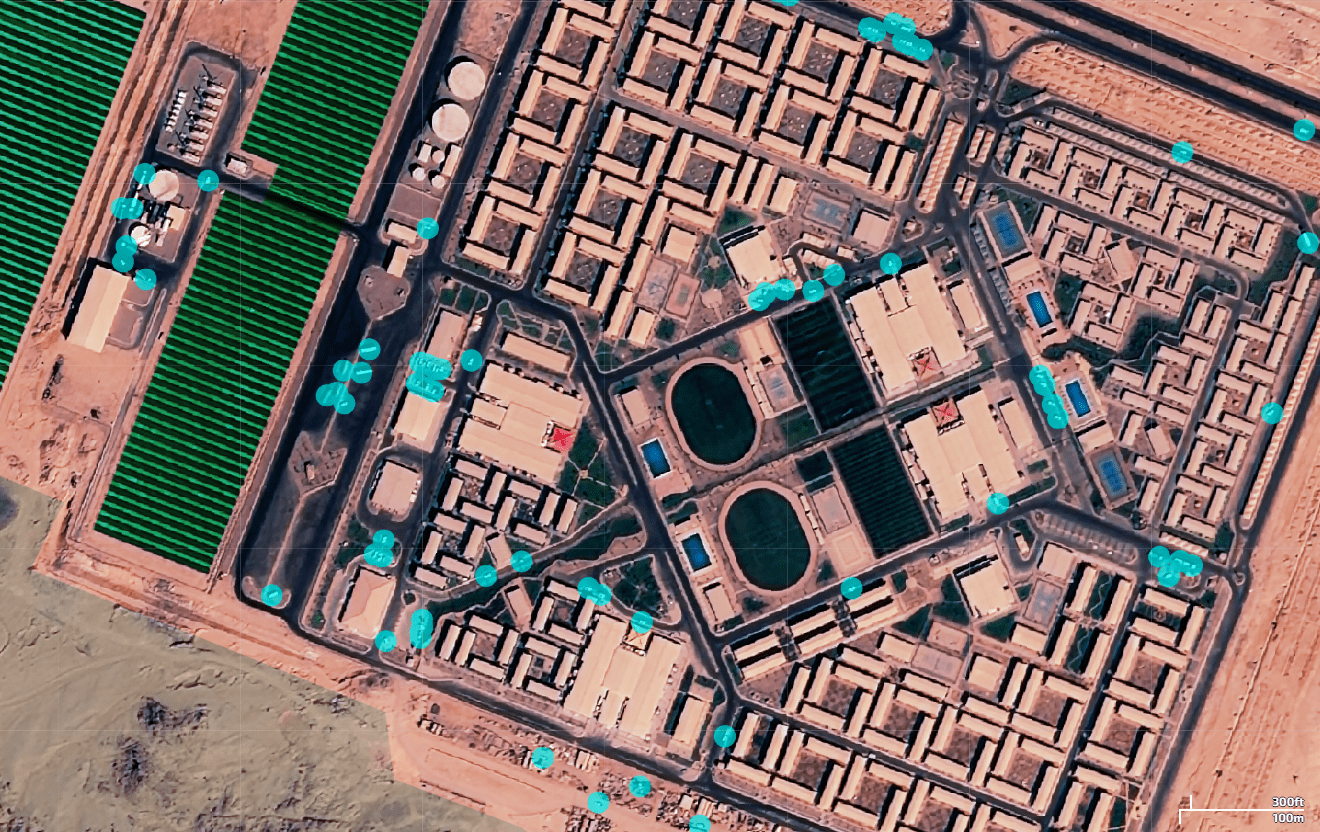
“When we started zooming in, we found that there were significant gaps in Maxar’s coverage,” says Farhand. “In fact, high-definition imagery was nonexistent publicly.”
Soar then approached some of its users in the open-source intelligence community, who confirmed that they could not access detailed images of the area either. “It wasn’t just us having this problem. It was other people as well,” says Farhand. “That’s when we thought, something has to be up.”
One of the main commercial uses for satellite imagery is to help companies understand how their rivals or entire countries are faring in the global marketplace—to see, for example, “how many cranes are active on the Manhattan skyline right now, or [how many] oil tankers are in port,” says Jamon Van Den Hoek, a geography professor and director of the Conflict Ecology Lab at Oregon State University.
“If there’s no Maxar images acquired over an area that is experiencing rapid economic investment, something fishy is going on,” Van Den Hoek says. “Probably the simplest solution is that a money interest is purchasing those images at the highest level, where they maintain an exclusive right to them.”
Not everyone agrees. “I’ve not heard of any commercial company trying to restrict things,” says Doug Specht, a geography lecturer at the University of Westminster in London. “My immediate reaction is that no one bothered with high resolution because it’s in the middle of a desert and high-resolution imagery is incredibly expensive to own and distribute.”
Stephen Wood, senior director of Maxar’s news bureau, told MIT Technology Review: “We do not have any recent high-resolution imagery that has been collected over these areas.” He wrote that the company primarily focuses on its customers’ areas of interest but “when we have available imaging time, we will collect other areas as part of our overall mission to continually update the entire globe with high-resolution imagery. We tend to concentrate first on those areas that exhibit the most change (e.g., cities, etc.) but will fill in those other areas of the globe as well.”
When asked if customers can obtain exclusive access to Maxar’s images, Wood replied: “The vast majority of everything we collect is placed into our public imagery archive which is a cornerstone of our imagery business. Those images are available for purchase and we ultimately serve our customers via a range of different contract types.”
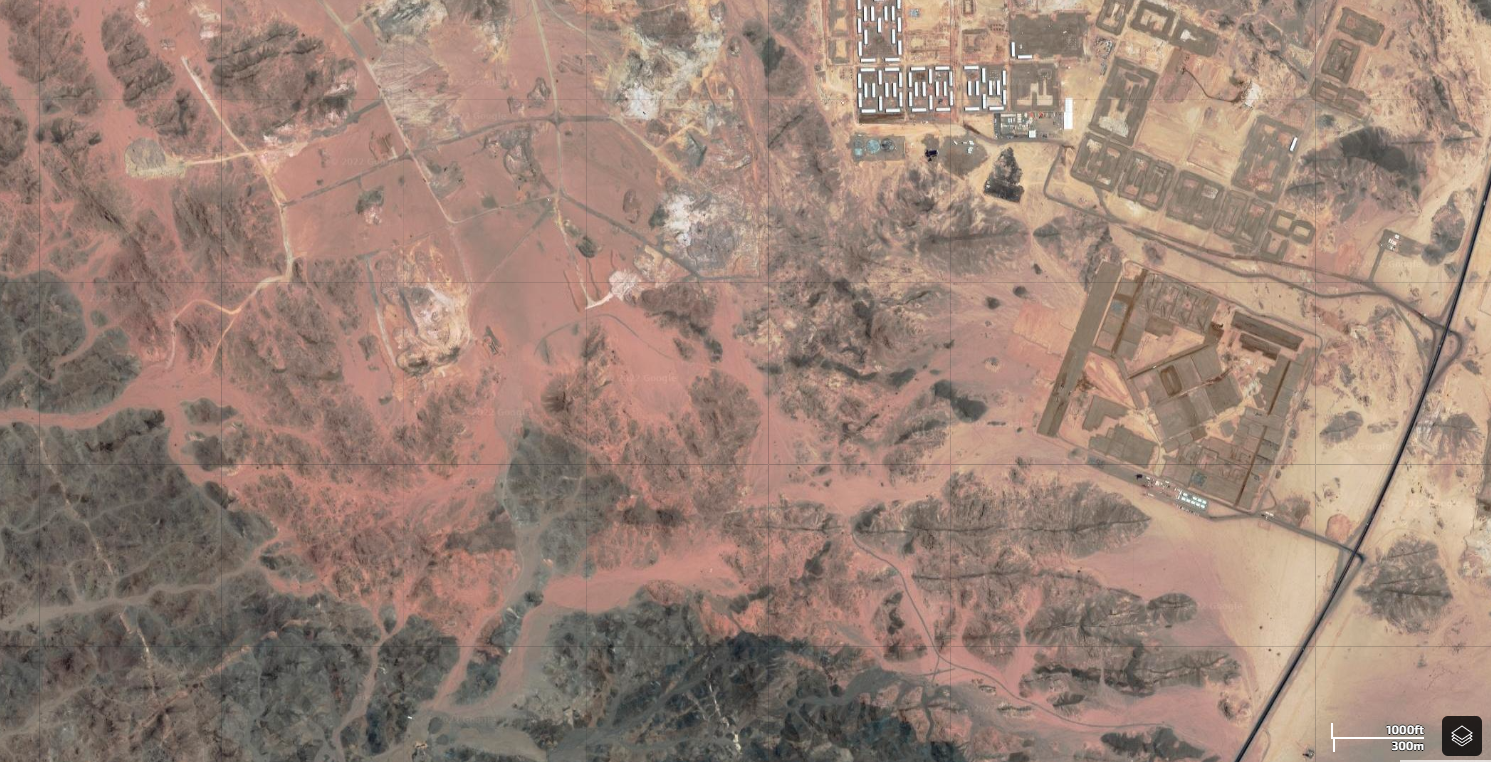
High-resolution Planet images of parts of The Line do seem to be available for licensing, although none have surfaced publicly on Google Maps to date.
A Google spokesperson told MIT Technology Review: “We are constantly updating satellite imagery as it becomes available from our imagery providers. Since our providers often focus on cities and places that are more heavily populated, these regions tend to get updated imagery more frequently.” The satellite images on Google Maps cover only about one-fifth of Earth’s surface—but 98% of its population.
While the entire surface of the planet gets photographed multiple times a day at low resolution, the sharpest images from the latest commercial satellites can still cost upwards of $3,000, according to a price list at Apollo Imaging, a satellite imagery aggregator. These are far from comprehensive, and some images are withheld from public access for national security reasons, a process known as shutter control. Many Chinese imaging companies, for example, will not sell any satellite pictures of China, North Korea, Taiwan, or Tibet.
Van Den Hoek says shutter control is also common in humanitarian and conflict contexts: NGOs might try to download a satellite photo of a new refugee camp or a destroyed bridge—imagery that they know has been collected—but find it missing from databases. “What’s happened is that, unbeknown to them, that image has been embargoed by probably the US Department of Defense, which wants exclusive use of it,” he says.
Whatever the reason for the missing Saudi Arabia imagery, Farhand wanted to find out more about The Line. In October, he paid two Asian startups, CG Satellite in China and 21AT in Singapore, to have their satellites in low Earth orbit take pictures of the construction area. He was blown away by what he saw.
“I thought, holy moly, they’re actually doing it,” says Farhand. “Look at how many trucks are there. Look how much earth is moved. I couldn’t believe how big Neom’s construction camp was.”
Soar used machine vision to count the excavation equipment operating on a single five-kilometer section of The Line, in a mountain valley, and assess its activity. CG’s imagery shows 425 excavation vehicles on The Line itself, and over 650 vehicles on a construction base, over five square kilometers in size, that was built close by to house construction workers. The base is equipped with multiple swimming pools, soccer fields, and cricket pitches; it even has its own solar farm.
A separate satellite image, taken about 60 kilometers away near the coast, shows shallower excavations and fewer construction vehicles—about 100 over a similar five-kilometer stretch. The eastern end of The Line’s site has seen less activity.
Soar’s Image analysis of the earthworks suggest that only about half of The Line’s proposed 170-kilometer length, and just a quarter of its final area, has had construction activity to date. While Neom says that The Line will ultimately be 200 meters wide, the sections imaged vary from about 70 to about 150 meters in width. Shadows thrown by the excavations’ walls suggest they extend to a depth of around 20 meters. Buildings 500 meters tall typically have foundations extending 60 meters or more underground.
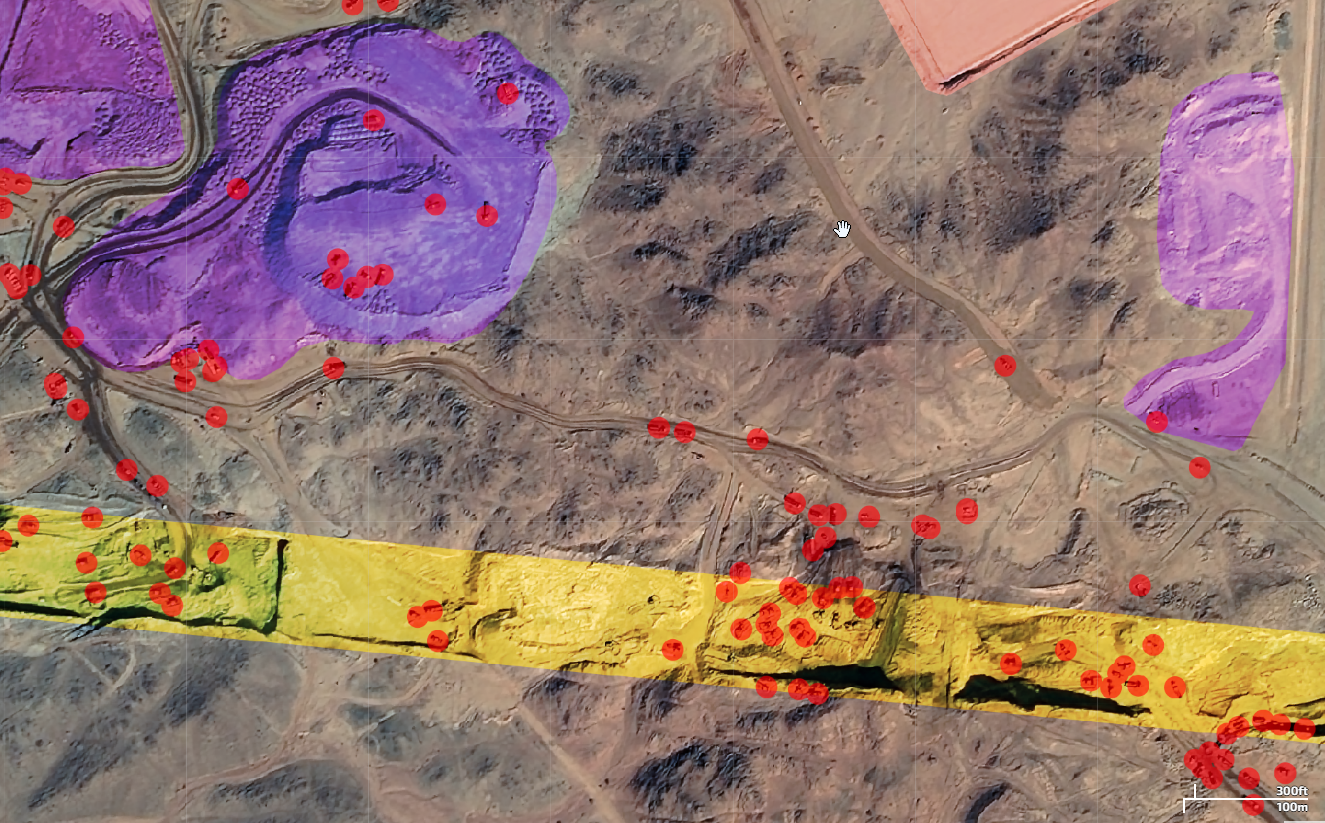
Pointing to a massive causeway being constructed near an alluvial plain at the project’s western end, Farhand notes: “At every part of this project, there’s massive terraforming going on, and some of the stuff is going to indelibly change the environment forever. The question is, have they bitten off more than they can chew?”
Neom did not immediately reply to requests for comment. The initial phase of construction, and the arrival of The Line’s first inhabitants, is currently scheduled for 2030.
Keep Reading
Most Popular
Large language models can do jaw-dropping things. But nobody knows exactly why.
And that's a problem. Figuring it out is one of the biggest scientific puzzles of our time and a crucial step towards controlling more powerful future models.
How scientists traced a mysterious covid case back to six toilets
When wastewater surveillance turns into a hunt for a single infected individual, the ethics get tricky.
The problem with plug-in hybrids? Their drivers.
Plug-in hybrids are often sold as a transition to EVs, but new data from Europe shows we’re still underestimating the emissions they produce.
Stay connected
Get the latest updates from
MIT Technology Review
Discover special offers, top stories, upcoming events, and more.
